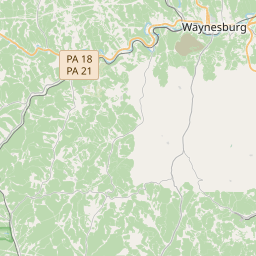Greene County Civil War Memorial
Historical marker location:






April 12, 1861: The Civil War begins with the Confederate attack on Fort Sumter, located in South Carolina's Charleston Harbor.
April 15, 1861: President Abraham Lincoln issues a call for 75,000 volunteers to serve in the Union Army to suppress the rebellion.
May 24, 1861: The first major land battle, known as the First Battle of Bull Run (or First Battle of Manassas), takes place in Virginia. It ends in Confederate victory.
September 17, 1862: The Battle of Antietam in Maryland becomes the bloodiest single-day battle in American history, with heavy casualties on both sides. The Union forces, commanded by General George McClellan, manage to halt Confederate General Robert E. Lee's advance into Union territory.
January 1, 1863: President Lincoln issues the Emancipation Proclamation, declaring that all slaves in Confederate-held territories are to be set free. However, the proclamation does not immediately free all slaves in the United States.
July 1-3, 1863: The Battle of Gettysburg in Pennsylvania takes place, resulting in a significant Union victory and inflicting heavy casualties on Confederate forces. It marks a turning point in the war.
November 19, 1863: President Lincoln delivers the Gettysburg Address, emphasizing the principles of liberty, equality, and the preservation of the Union.
April 9, 1865: General Robert E. Lee surrenders to Union General Ulysses S. Grant at Appomattox Court House in Virginia, effectively ending the Civil War.
April 14, 1865: President Lincoln is assassinated by John Wilkes Booth while attending a play at Ford's Theatre in Washington, D.C.
May 10, 1865: Confederate President Jefferson Davis is captured, signaling the collapse of the Confederate government.
December 6, 1865: The Thirteenth Amendment to the United States Constitution is ratified, officially abolishing slavery throughout the country.
While this timeline provides an overview of key events, it is important to note that the Civil War spanned over four years, from 1861 to 1865, and encompassed numerous battles, campaigns, and political developments that shaped the course of American history.
Pennsylvania is home to the longest stone arch bridge in the world, the Rockville Bridge, which spans the Susquehanna River near Harrisburg.
In the 1760s, Greene County became a center for coal mining, with the discovery of high-quality bituminous coal. This led to a rapid expansion of the coal industry in the region, making it a key player in the industrial revolution. The coal mines in Greene County provided fuel for steam engines, locomotives, and manufacturing industries, driving economic growth in the area.
During the Civil War, Greene County played a significant role in the Union effort. Many men from the area enlisted in the Union Army, and the county provided valuable resources and supplies to support the war effort. The county also witnessed skirmishes and raids by Confederate forces, who were targeting the strategic supply lines.
In the 20th century, Greene County experienced a decline in the coal industry due to economic factors and increased competition. However, the county diversified its economy by focusing on agriculture, natural gas, and tourism. Today, Greene County remains an important agricultural center, known for its dairy farms and livestock production. It is also home to several natural gas wells, contributing to the energy sector. The county's picturesque landscapes, including the stunning Greene River Trail and Ryerson Station State Park, attract outdoor enthusiasts and tourists.
Greene County Timeline
This timeline provides a concise overview of the key events in the history of Greene County, Pennsylvania.
- 1796 - Greene County is established in the state of Pennsylvania
- Early 1800s - County experiences a population boom due to coal mining and the development of the coal industry
- 1831 - Borough of Waynesburg is incorporated
- 1863 - Waynesburg College (now Waynesburg University) is founded
- 1915 - Construction of the Ryerson Station State Park begins
- Mid-1900s - Oil and gas production becomes an important industry in the county
- 1978 - Greene County Historical Society is established
- 1991 - Ryerson Station State Park is officially opened to the public
- Today - Greene County continues to thrive with a diverse economy including industries such as coal mining, natural gas production, agriculture, and tourism